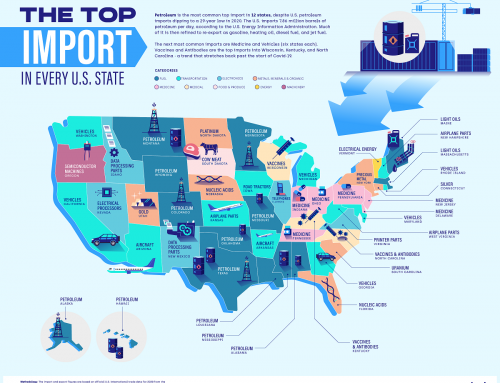There’s a fine line that separates intermodal and multimodal transportation. It’s nearly indiscernible; both are used as a means of cargo transportation and to determine the best transportation route while utilizing transport carriers in order to get deliveries from door to door.
But, in short, intermodal shipping utilizes several different contracts throughout the span of a transportation journey, which means shippers independently sign contracts with sea, air and land services. Multimodal, on the other hand, looks nearly identical, but comes with a major caveat: it uses one contract all the way through the journey, rather than several contracts like intermodal.
Both are frequently used throughout the shipping and transportation industry, but why do these options exist? And what makes them distinct options during the transportation of goods and services?
Intermodal Transportation
Intermodal services main draw is the fact that it uses several independent contracts throughout the transportation journey. That means, when packages are being moved by truck to port then by train and then by truck again, each leg of the journey is represented by a different transport carrier.
The main advantages for intermodal are:
- Lower shipping costs
- Negotiate separate terms and agreements
- Flexibility and specialized handling of goods
- Increased security of goods
These are just a few of the benefits to using intermodal for transportation needs. Of course, the main point to drive home is the fact that intermodal will reduce overhead costs. By choosing individual transport carriers, a shipper will reduce costs by identifying the cheapest and most effective methods of transportation.
That being said, it does put a lot of responsibility on the shipper to stay on top of deliveries as they handle several contracts all at the same time. Unforeseen events could occur, like delivery delays and poor communication with carrier companies. This method also requires much more time and attention. With several contracts in hand, the process is far more logistics-based and requires more paperwork and coordination.
Multimodal Transportation
Similar to intermodal, multimodal transportation uses several transport carriers in order to achieve door to door delivery. But, in this case, the process is summed up into one contract, which, unlike intermodal, saves time, paperwork and requires far less logistical coordination. Every mode of transportation is handled by a single carrier, or company, making the process easier to handle for some within the shipping industry.
The main advantages for multimodal are:
- Reduced involvement during shipment delays
- Easier shipment tracking
- Delivery time efficiency
- Less overhead costs
In order to achieve multimodal, shippers will either look to companies that offer every mode of transportation, i.e. land, sea and air, or, the more likely scenario, will see them hire an agent to arrange the entire process.
While intermodal provides an opportunity to reduce costs by independently seeking more cost-efficient transport carriers, multimodal relieves the headache of dealing with unwanted paperwork on top of regular day-to-day operations. Not to mention, all of the smaller, tedious tasks, like dealing with delays, will fall on the contracted company because they’ll be involved with every leg on the journey.
In the end, both services provide unique advantages. For some shippers, intermodal provides the freedom of independent contracts and the ability to choose several different transport carriers; which can lower costs. While others will gravitate towards a more uniform, hands-off approach, in an effort to keep all of their efforts on day-to-day operations.



